Las Palmas: Tuesday, 13th – Wednesday, 14th November 2018
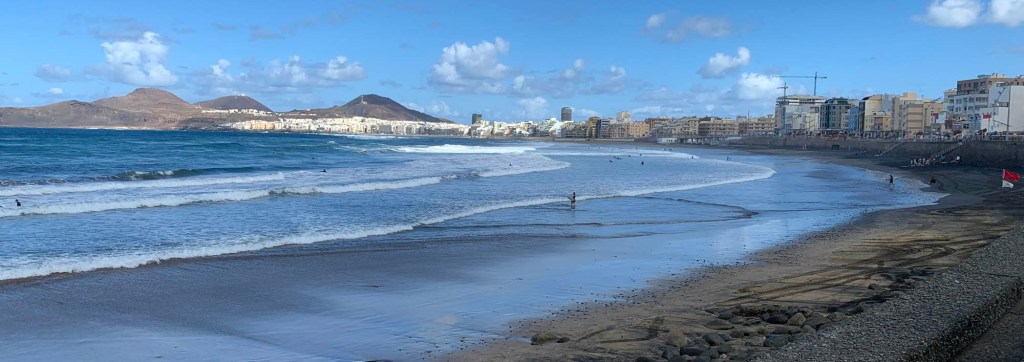
We were not sure quite what to expect from Gran Canaria out of season and, over the first two days, Las Palmas turned out to be a city of two halves. Having been given a free upgrade by the hotel we very happily settled in to our suite on arrival.

We then took our customary walk somewhere new for Robert to get his bearings. This took us along the sea front at Playa de Las Canteras, the longest beach on the island at almost four kilometres. The beach is protected by La Barra – a rocky strip running parallel with the shore -and the end where the breakers are more lively seems to be given over to surf schools.

The sand lends itself to the creation of detailed and complex sculptures . . .

. . . and Matilda judged the sea to be warmer than the hotel pool she had dabbled her fingers into earlier.
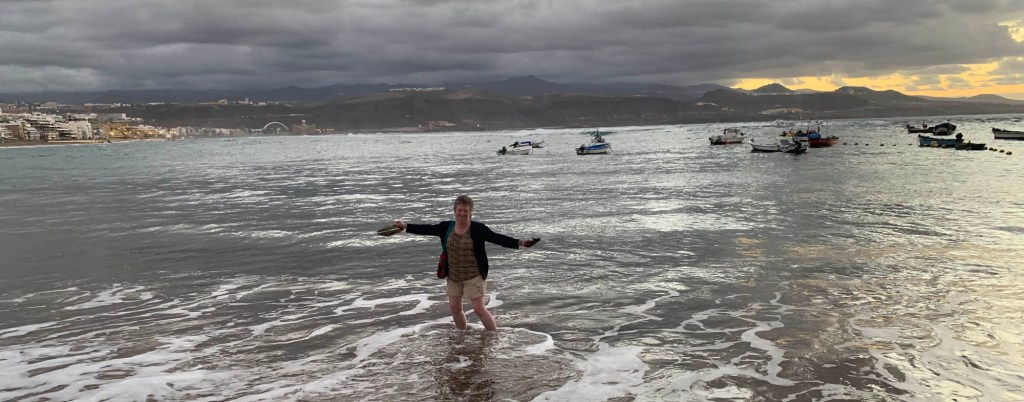
We realise that we have had our expectations raised by the extraordinary beauty and style of some of the city squares we have visited in mainland Europe recently: Nancy, Krakov and Brugges spring to mind, but the buildings along the waterfront are nothing to blog about. The beach front at Las Palmas boasts some pleasant beachside bars and cafes but the architecture is dominated by modern tower blocks, some with graduated balconies, and little else, although the views must be lovely.
The peace of our day was somewhat diminished by a call from our daughter telling us that someone had driven into the back of her while she was stationary at some traffic lights but after a few phone calls to insurance companies, we set off in search of a much-needed restorative beer and sustenance.
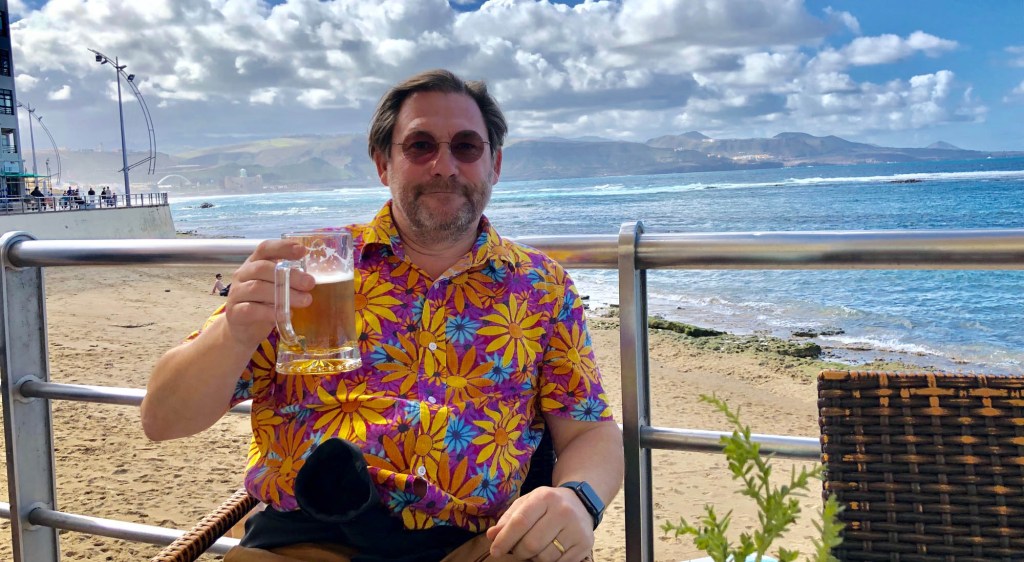
A particular friend has asked for us to provide more information about the food on our travels. We do not include much culinary information when we are in Alan and self-catering as this is simply home cooking which we all, hopefully, know how to do.
However, on this trip we are eating out.
A local speciality on the islands is called canarian potatoes. Matilda likes to think she has an affinity with the English language and its correct usage so she is slightly embarrassed about the length of time it took for her to realise that this is the adjectival form for the Canary Islands [Robert: what the hell is she talking about]. Her excuse is that none of the menus seem to use a capital C for canarian.
Canarian potatoes are scrubbed not peeled and were traditionally cooked in sea water. Once cooked, the water is drained off and the potatoes are left to dry out in the hot pan so that they become slightly wrinkled with a dusting of salt. They are then served with a smoky chilli-based rojo mojo sauce.
Matilda has a certain salt requirement otherwise cramp takes hold and she was keen to try the canarian potatoes. Robert ordered them as a side dish to go with the seafood pasta for two which, for some unfathomable reason came wrapped in a foil construction made to look like a bird. Both were tasty.
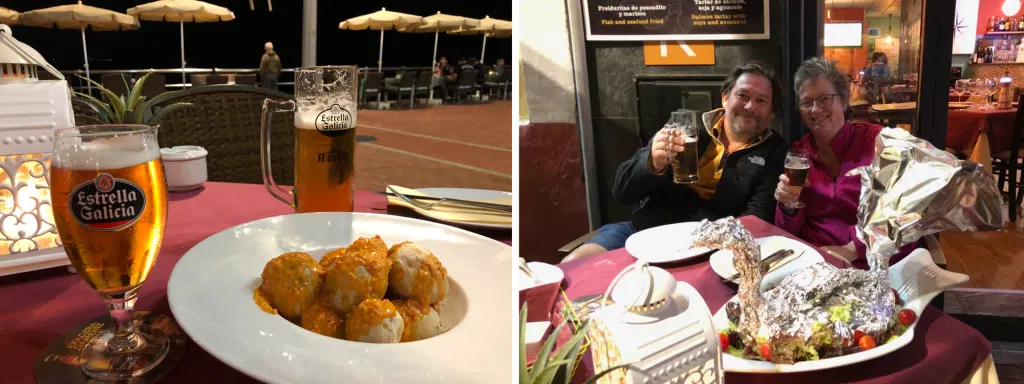
Wednesday was designated as a sightseeing day and we set off, after Robert had had some lengthy conversations with various insurance companies and garages about car repairs, to walk to the cathedral. Initially the streets were clogged with traffic and uninspiring but eventually we were rewarded with more attractive architecture and some historic buildings.
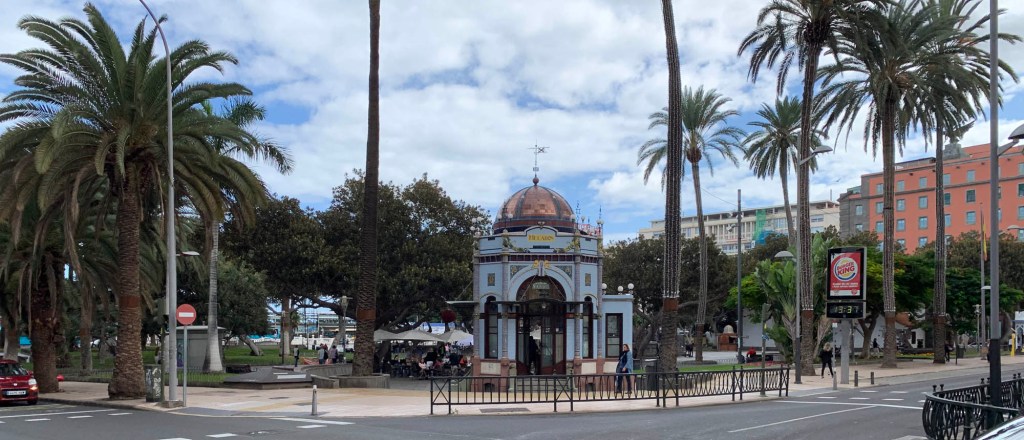
The Cathedral of Santa Ana was begun in 1500 and incorporates a variety of architectural styles. It also includes the Diocesan Museum of Sacred Art which is housed in one of the halls overlooking a courtyard of orange trees.
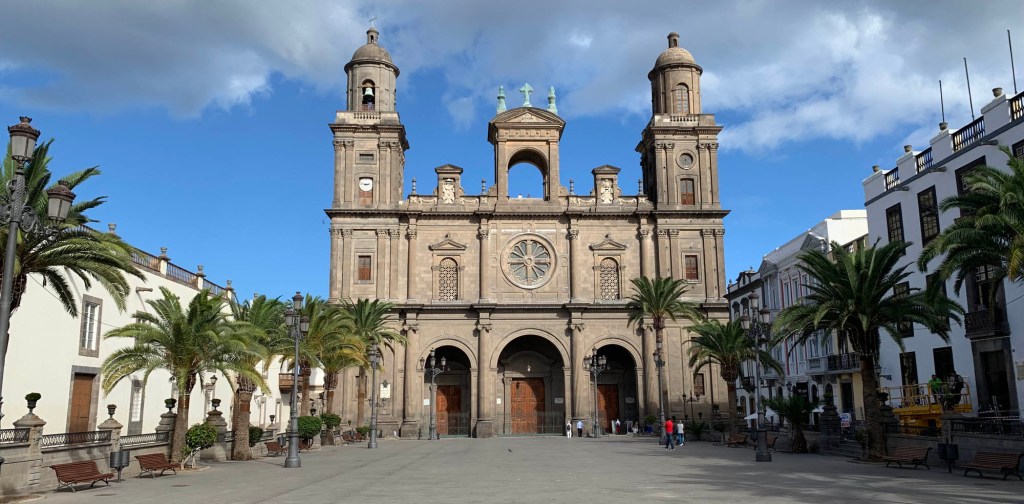
The courtyard would have provided an oasis of calm, were it not for the fact that Robert received another intrusive phone call relating to the accident which must have contravened many of the principles of GDPR.
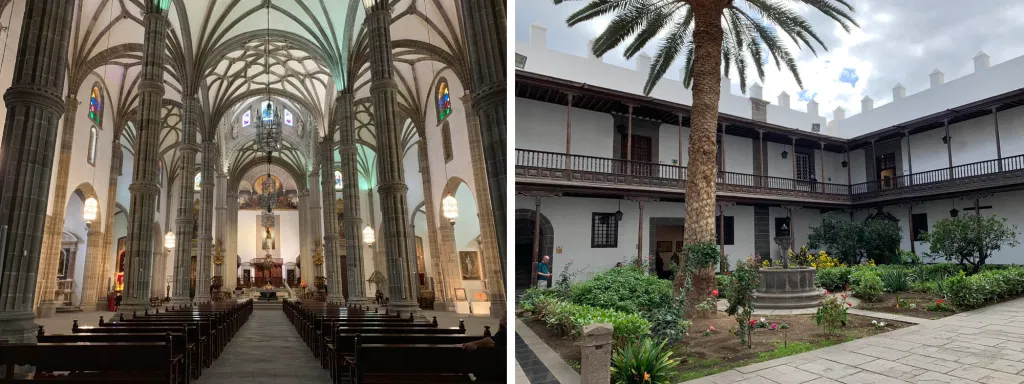
Around the cathedral there are some beautiful art nouveau style buildings as well as the Casa Museo de Colón described as a “magnificent example of noble architecture” and the place where Christopher Columbus is alleged to have spent the night during his stay on the island.
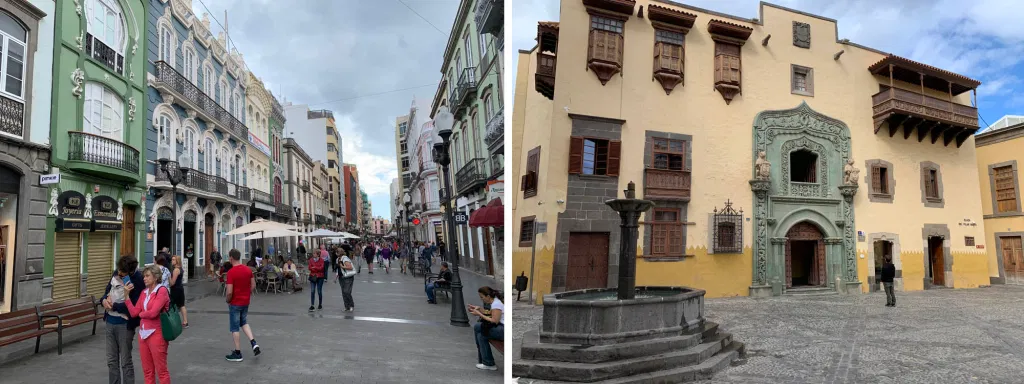
The walk to the cathedral had not been very picturesque so we decided to get a bus back to give Matilda time to swim and the walk to the bus garage took us past a cafe with an old stream engine inside it [the building appeared to be either the old railway station or engine shed, sadly no trains or trams run on Gran Canaria anymore] which we reluctantly passed by.
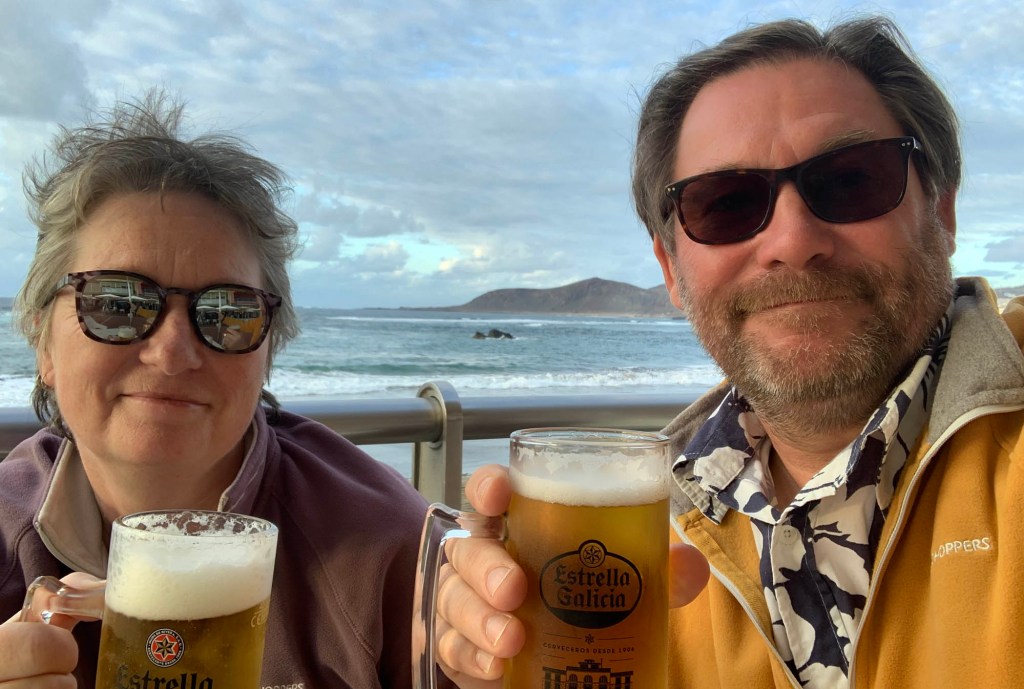
The swim, for Matilda, proved to be a little unsatisfactory as the water was only 0.5m deep at the shallowest end and Matilda found she could not swim without grounding herself [Robert: too much draft. The joke works in a number of ways].
On the first night, we had identified a restaurant which was due to open the next day and following an aperitif with views of the sea and the setting sun . . .
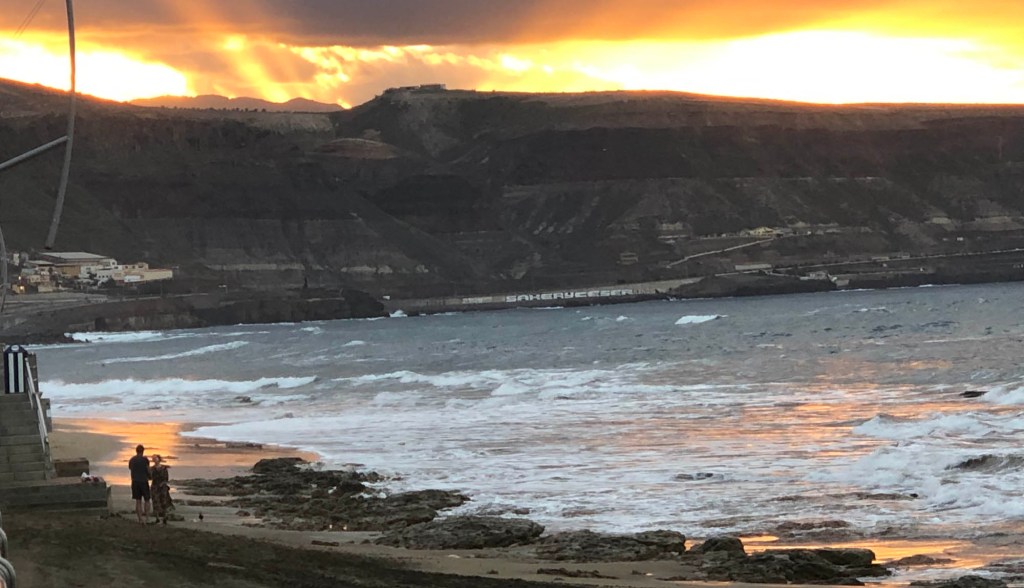

. . . .we became some of their first customers. We were amused to see that the menu was translated into English but not French.
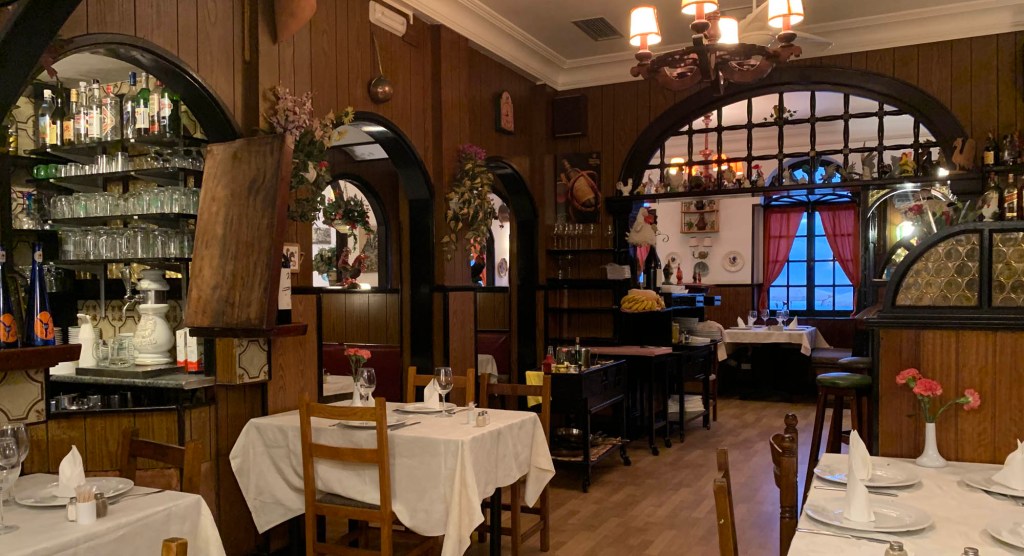
Robert’s meal was prepared, as we watched, on a mobile hob and the canarian potatoes were good and salty, although we did seem to be the youngest customers by some decades.
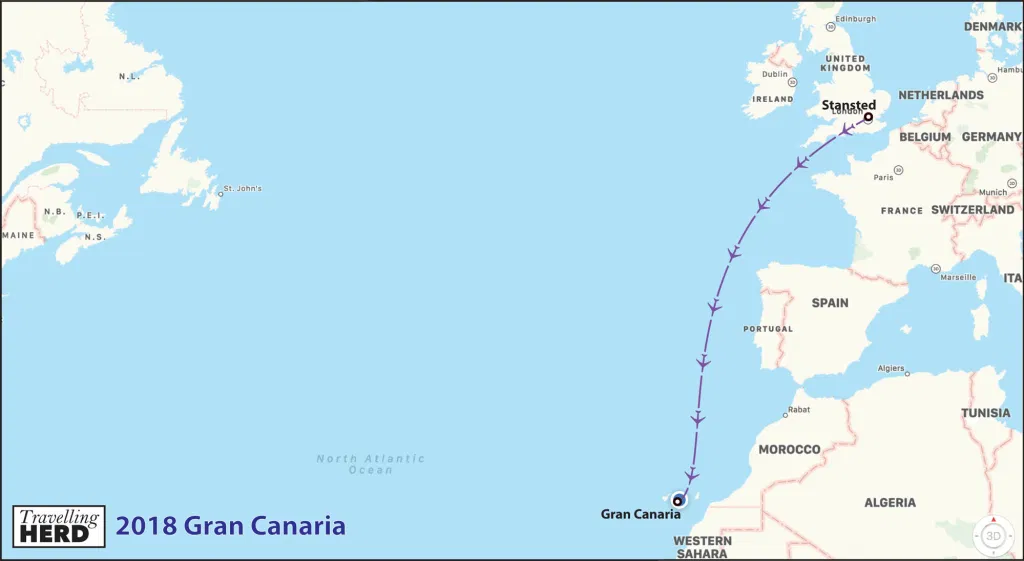
Walked today: 8.8 miles [Tuesday] & 8.7 miles [Wednesday]
Route Map:
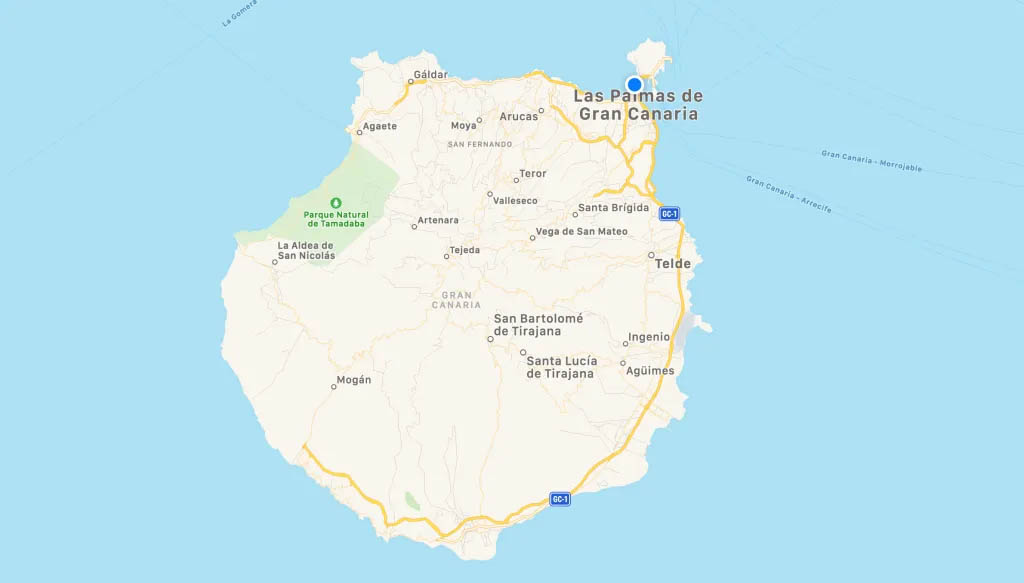
Location: Hotel Concorde, Las Palmas de Gran Canaria, Spain






